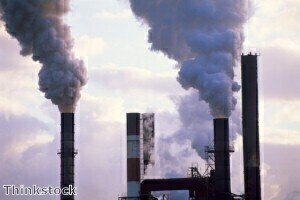Air Clean Up
Cleaner Coal Technologies Vital to Reducing CO2 Emissions
Jun 03 2015
The World Coal Association (WCA) has today called on governments worldwide to recognise the vital role cleaner coal technologies play in reducing global CO2 emissions and increase investment in all low emission technologies.
Speaking at a WCA workshop in London today, Glencore’s Mick Buffier, the WCA’s Chairman stated: “For many countries, the reality is that the only way they can meet their growing energy needs is through affordable, readily available coal. According to the International Energy Agency (IEA) global electricity from coal is expected to grow by around 33% to 2040. Given this growth, it is essential that there is greater investment in cleaner coal technologies to widen their deployment – this includes high efficiency, low emissions (HELE) coal technologies and carbon capture, use and storage (CCUS).”
The WCA workshop “Building Pathways for Cleaner Coal Technologies” brings together stakeholders from around the world to discuss the energy challenges we face and the role that can be played by technology in reducing global CO2 emissions.
In his keynote presentation, Mike Monea, SaskPower President of Carbon Capture and Storage Initiatives, provided an update on the Boundary Dam CCS project. Boundary Dam, launched in October 2014, is the world’s first coal-fired CCS plant and a proven technology, which reduces CO2 emissions by one million tonnes a year.
“We need a mix of sources to meet the ever-growing demand for power, and in a way that balances affordability, reliability and sustainability,” said Mr Monea. Carbon capture and storage is part of that mix. SaskPower is a pioneer in this technology, and we benefit from working with groups around the world to stay on top of new CCS developments.”
Speakers at the workshop also highlighted the role of HELE technologies, particularly as these technologies are available off-the shelf today. Hans-Wilhelm Schiffer, Executive Chair, World Energy Resources Programme of the World Energy Council and Consultant and Advisor to the Executive Board of RWE AG, stated: “There are very real opportunities for improved efficiencies at fossil-fuelled power plants, CCUS and the implementation of flexibility requirements for conventional power plants in order to integrate the increased feed-in of fluctuating renewable energy sources. The use of coal and the increased share of renewables is not a contradiction; electricity from coal can be key to balancing intermittent renewables”.
“The WCA recognises the vital role that all low emission technologies can play and has created a global Platform for Accelerating Coal Efficiency (PACE). PACE’s vision is for the most efficient power plant technology possible to be deployed when coal plants are built. PACE’s objective is to raise the global average efficiency of coal-fired power plants and so minimise CO2 emissions, whilst maintaining legitimate economic development and poverty alleviation efforts,” said Mr Buffier.
“As we approach COP21 at the end of this year, it is essential that any new climate agreement is technology neutral. Reducing emissions globally, while ensuring energy security and economic development, means investing in all low emission technologies, including HELE and CCUS.”
Events
May 05 2024 Seville, Spain
May 13 2024 Munich, Germany
May 23 2024 Beijing, China
May 23 2024 Beijing, China
Jun 10 2024 Algiers, Algeria














